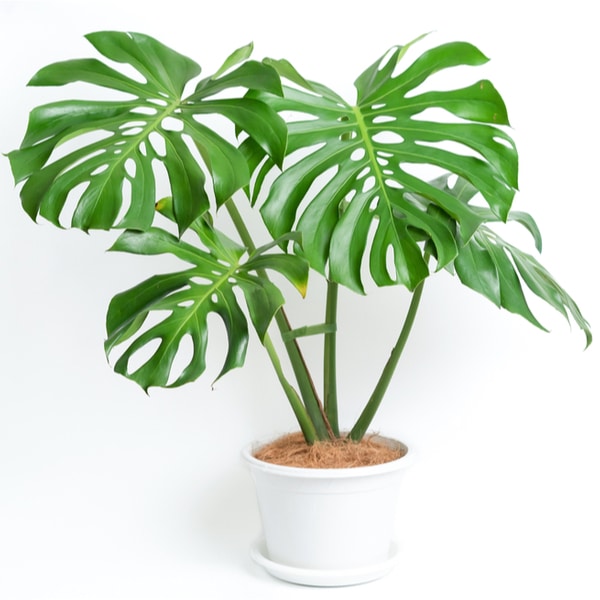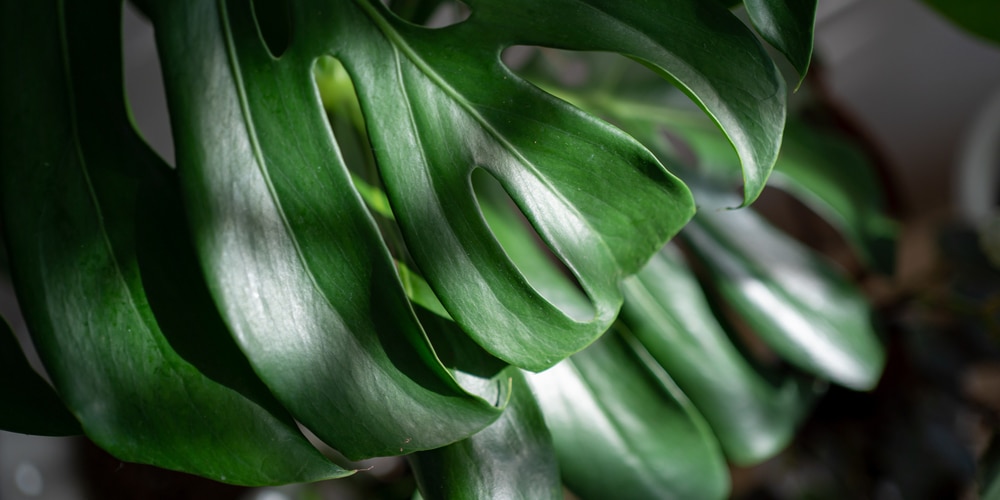The Monstera deliciosa borsigiana is a common tropical houseplant that can be grown outdoors in USDA zones 9 to 11. It’s a sub-species of the very popular Monstera deliciosa. The Borsigiana variety appeals to many homeowners as it’s slightly small and takes up less space. The species is also faster growing and can be easily propagated. It’s often referred to as the Monstera deliciosa ‘wrinkle’ or the Wrinkle Deliciosa for short.
Monstera deliciosa borsigiana is also popular due to its dark-green glossy foliage, which is heart-shaped. It’s also very low-maintenance and easy to care for, making it the perfect choice for many people. Let’s look at how to care for a Monstera deliciosa borsigiana.
What is a Monstera Deliciosa Borsigiana?
The Monstera deliciosa borsigiana is part of the Araceae family, with the genus Monstera, which has 48 varieties. It’s an attractive tropical plant that originates from Southern Mexico.
Monstera deliciosa borsigiana produces lovely flowers during the spring and then grows a unique fruit known as a deliciosa, which, as the name suggests, is very tasty. Unfortunately, when kept as a houseplant, the Monstera deliciosa borsigiana is less likely to flower and produce fruit.
The Monstera deliciosa borsigiana has large heart-shaped leaves that can grow as large as 20 inches long. These plants can grow larger in their natural habitat but will likely be slightly small if grown indoors. An indoor plant can grow up to six feet.
Monstera deliciosa borsigiana is a climbing plant that can be grown in hanging baskets or against a fence or a support pole. You may find that you need a sphagnum moss support pole to help your indoor plant stand up.
Like all species in the Araceae family, the Monstera deliciosa borsigiana is toxic to humans and animals. You should, therefore, keep your plant away from pets and young children, as ingesting the plant can cause vomiting and diarrhea.
Caring for a Monstera Deliciosa Borsigiana
Monstera deliciosa borsigiana and other plants in the Araceae family require deep watering and need to be kept in indirect light. They shouldn’t be left in a draught or left outside in the cold as they like warmth and humidity and aren’t very tolerant to the cold. Here are some Monstera deliciosa borsigiana care tips:
Water Requirements
Like many tropical plants, the Monstera deliciosa borsigiana thrives when it’s watered using the ‘soak and dry’ method of watering. You can generously water your plant and then leave it until the topsoil feels like it’s dried out.
In the summer, your plant will need to be watered once or twice a week, depending on the climate you live in. Watering frequency can be reduced in the cooler winter months. Be careful not to overwater your plant as this may cause root rot. Monstera deliciosa borsigiana are prone to fungal infections if they’re left standing in soggy soil. The top two inches of soil should be dry before you water your plant again.
Fertilizer
When watering your plants, you can also use a diluted house plant fertilizer to keep your Monstera deliciosa borsigiana in good condition. You can feed your plant once a month during the growing season.
Once the weather starts to cool down, your plant will stop growing and will require fewer nutrients. You can therefore stop fertilizing your plants when the weather starts to cool down in the fall.
Sunlight Requirements
You can sit your Monstera deliciosa borsigiana in an area with indirect sunlight. Be careful not to leave your plant in the full sun as the species is quite delicate and can suffer from sunburn, which may kill the plant.
If you’re growing your plant outdoors, it’s best to move it inside during the fall and winter, as frost and snow will affect the health of your plant. Don’t leave your plant in a draft or near the air conditioner, as this can also affect its health.
Soil and Repotting
Monstera borsigiana’s thrive in soil with a Ph range of between 5 and 7.5. You can use a standard house plant soil mix that’s well-draining and has larger particles. It’s best to plant your Monstera deliciosa borsigiana in a pot that has drainage holes at the bottom. You may also like to add a layer of stones or gravel to the bottom of the plant pot to help with drainage.
Your plant shouldn’t be frequently repotted and should remain in the same pot until it becomes root-bound.
Humidity
As Monstera deliciosa borsigiana are tropical plants, they require high humidity. These plants prefer a moisture level of approximately 70%. If you live in a dryer climate, you’ll need to take steps to improve the humidity for your plant. You can do this by misting your plant, using a water tray or a humidifier. If you decide to spray your plant’s leaves, use a spray bottle that produces a fine mist, and don’t soak the foliage.
Pruning
Monstera deliciosa borsigiana is a fast-growing plant that can be trimmed to keep it look neat and tidy. You can cut off older leaves using a pair of clean scissors or a sharp knife to maintain the plant’s size. Regular pruning can also help improve the plant’s appearance and health.
Propagation
Monstera borsigiana can be easily propagated if you want to grow a new plant and start a jungle. You can take a cutting from your plant and put it in water until roots start to grow. Then plant the cutting in a small pot with well-draining soil. It’s best to propagate your plant in the spring, as it will have plenty of time to grow.
Conclusion
Monstera borsigiana is a lovely plant with dark green heart-shaped leaves. It’s relatively easy to care for and grows quite fast. Keep your plant in warm conditions with medium indirect sunlight. Water your plant using the ‘soak and dry’ method, but be careful not to overwater your plant.
You may also like:

